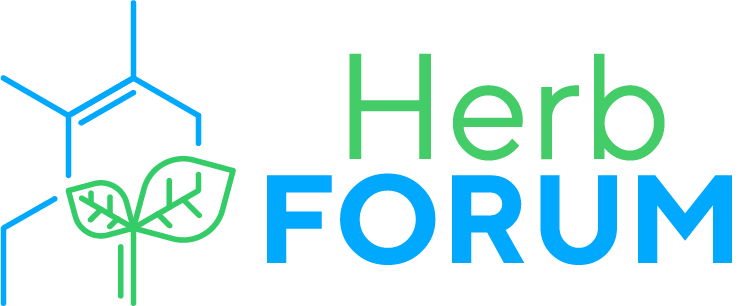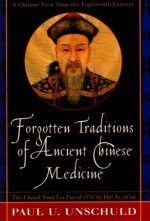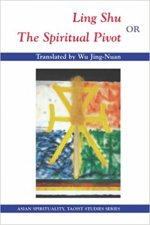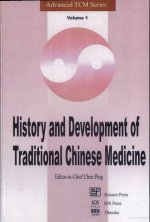This thread will be used to build a list of quality books about traditional Chinese medicine.
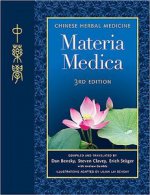
Chinese Herbal Medicine: Materia Medica (3rd Ed.) by by Dan Bensky, Steve Clavey, and Erich Stoger
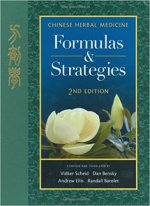
Chinese Herbal Medicine: Formulas & Strategies (2nd Ed.) by Volker Scheid, Dan Bensky, Andrew Ellis, Randall Barolet

Shang Han Lun by Zhongjing Zhang et. al.
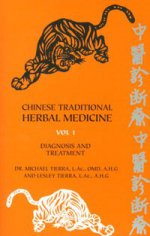
Chinese Traditional Herbal Medicine Volume I Diagnosis and Treatment
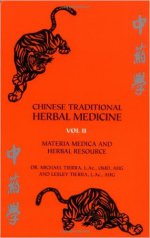
Chinese Traditional Herbal Medicine Volume II Materia Medica & Herbal Reference
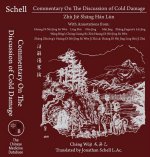
Commentary On The Discussion of Cold Damage by Jonathan Schell L Ac (Translator)
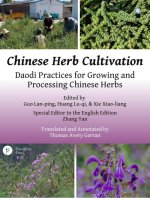
Chinese Herb Cultivation: Daodi Practices for Growing and Processing Chinese Herbs
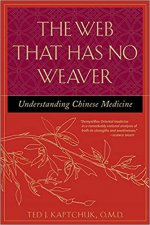
The Web That Has No Weaver : Understanding Chinese Medicine by Ted Kaptchuk

The Foundations of Chinese Medicine: A Comprehensive Text by Giovanni Maciocia
Also see his books The Practice of Chinese Medicine and Diagnosis in Chinese Medicine
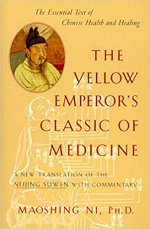
The Yellow Emperor's Classic of Medicine: A New Translation of the Neijing Suwen with Commentary

Chinese Herbal Medicine: Materia Medica (3rd Ed.) by by Dan Bensky, Steve Clavey, and Erich Stoger
The new 3rd edition of Chinese Herbal Medicine: Materia Medica is designed to give practitioners the information they need to practice Chinese herbal medicine with greater understanding and confidence. It provides a wealth of new information: more than twice the content of the previous edition -- and practical insight into more than 530 of the most commonly used herbs in the Chinese pharmacopoeia.
Drawing from a wide range of sources, both classical and modern, this edition provides unparalleled perspective and detail that goes far beyond what is available elsewhere to the Western practitioner.

Chinese Herbal Medicine: Formulas & Strategies (2nd Ed.) by Volker Scheid, Dan Bensky, Andrew Ellis, Randall Barolet
The new 2nd edition of Chinese Herbal Medicine: Formulas & Strategies, the companion volume to Chinese Herbal Medicine: Materia Medica, is designed to serve as both a textbook for students and an authoritative reference for practitioners of traditional Chinese medicine. Included in the new edition are over 800 medicinal formulas drawn from both classical and modern sources, which provide more than twice the information in the earlier edition. For each of the 340-plus principal formulas there is a discussion of its therapeutic actions and indications, analysis of the functions and interactions of the ingredients, method of preparation, and a list of modifications to customize the formula in the clinic. Over 460 variations and associated formulas offer additional options for the practitioner. The commentary to each formula has been considerably expanded. This section deepens the readers understanding of a formulas genealogy, presents an overview of controversies regarding composition, usage, and other issues, describes the extension of a formulas application to a wider range of disorders, and provides key clinical pointers to facilitate use of the formula in the modern clinic. A new section on comparisons has been added to this edition. This is intended to help students and practitioners focus on the distinguishing characteristics of each formula by contrasting it with other formulas that are similar in terms of composition or indication. Tables at the end of each chapter reinforce these distinctions by comparing and contrasting formulas across a wider range. The introduction to the book traces the historical evolution of the formulas, and provides practical pointers for their preparation and use. Detailed timelines depict the key events, authors, and texts in the 2,000-year history of traditional Chinese herbal medicine, placing the contents of this book in historical context. Among the appendices are a pinyin-to-English cross reference to the formulas, a basic summary formulary correlated to symptoms and disorders, a full listing of all books cited in the text, and a bibliography of all modern sources used in the preparation of the book. A comprehensive index to the formulas, and a general index, round out the contents.

Shang Han Lun by Zhongjing Zhang et. al.
The Shang Han Lun (On Cold Damage), is among the oldest surviving, the most copiously annotated and the most revered of China's traditional medical texts. Of all of China's early medical classics, the "Shang Han Lun" is undoubtedly the one with the greatest relevance to the modern practice of Chinese medicine, and the one most deserving of Western attention. It was the first book to attempt to incorporate medicinal therapy into the medicine of systematic correspondences and channels and network vessels. Far ahead of its time in both theory and practice, it is not surprising that the prescriptions it contains, comprise an important part of today's medicinal formulary.

Chinese Traditional Herbal Medicine Volume I Diagnosis and Treatment
This first volume focuses on the theory, principles, diagnostic methods and treatment modalities that are an essential part of the practicum of Traditional Chinese Medicine (TCM). It is intended to not only provide the background and theoretical framework for the reader to understand the viewpoint from which TCM starts in its understanding of human health, but also gives the reader systematic insight and practical information to permit meaningful application of these principles.

Chinese Traditional Herbal Medicine Volume II Materia Medica & Herbal Reference
Volume II provides an extensive materia medica and herbal resource organized and developed for the Western practitioner. The book goes on to indicate the use of Chinese herbal formulae and the treatment of specific disease conditions. There are a number of useful index listings including Latin Name, Chinese Name, Chinese Herbal formulas, as well as a general index.

Commentary On The Discussion of Cold Damage by Jonathan Schell L Ac (Translator)
Written by Cheng Wuji and published in 1144 this is a complete commentary on the entire text of On Cold Damage (the Shang Han Lun) in the Song dynasty order. The entire text means that Cheng's commentary includes the four chapters on the pulse, as well as the chapters on the prohibitions in the back of the Shang Han Lun. All told this adds another 250 lines of text to the Shang Han Lun. In addition to Cheng Wuji's commentary, Jonathan Schell has annotated and translated Cheng's lines with over 1600 lines from the Su Wen, 500 lines from the Ling Shu, 22 Difficulties from the Nan Jing, numerous passages from the Classic of the Pulse (Mai Jing), and commentary from Zhang Jingyue's Lei Jing, Zhang Zhicong's commentaries on the Su Wen and Ling Shu, Wang Bing's commentary on the Su Wen, and as well as numerous other Shang Han Lun commentators. This books has been produced in full color, where the color has been used to show the attributed and unattributed quotes which the commentators use to illustrate their points. This book also includes 52 illustrations, 35 of which were composed by Cheng Wuji and 17 which have been composed by Jonathan Schell. This book illustrates the pinnacle of classical thought, where the reader through the annotations can trace Cheng's thought process, and apply the canonical texts of Chinese medicine, as cited by Cheng, to the understanding of the Shang Han Lun.

Chinese Herb Cultivation: Daodi Practices for Growing and Processing Chinese Herbs
The text Chinese Herb Cultivation: Daodi Practices for Growing and Processing Chinese Herbs by Thomas Garran represents a milestone in the development of Chinese medicine. As the first full-length English text devoted to the concept of daodi medicinal material, it provides an authentic introduction to the rich history of quality discernment in Chinese herbal medicine. At the same time, it is among the first English texts devoted specifically to the cultivation of Chinese herbs, with detailed descriptions that will advance herbal production around the world. By combining textual study with field research, Thomas brings his experience as both a scholar and a farmer to life, resulting in a unique text that is both inspirational and practical. As the first Western practitioner of Chinese medicine to undertake a PhD in the discipline of Chinese herbal pharmacy in mainland China, Thomas has a rare background that integrates agriculture, clinical practice, and academia.

The Web That Has No Weaver : Understanding Chinese Medicine by Ted Kaptchuk
The Web That Has No Weaver is the classic, comprehensive guide to the theory and practice of Chinese alternative medicine. This accessible and invaluable resource has earned its place as the foremost authority in synthesizing Western and Eastern healing practices. This revised edition is the product of years of further reflection on ancient Chinese sources and active involvement in cutting-edge scientific research.

The Foundations of Chinese Medicine: A Comprehensive Text by Giovanni Maciocia
This highly successful textbook covers the basic theory of traditional Chinese medicine and acupuncture, and discusses in detail the use of acupuncture points and the principles of treatment. The material is based on rigorous reference to ancient and modern Chinese texts, and explains the application of theory in the context of Western clinical practice. The new edition features new and updated material plus an accompanying website containing over 650 self-testing questions in a variety of formats.
Also see his books The Practice of Chinese Medicine and Diagnosis in Chinese Medicine

The Yellow Emperor's Classic of Medicine: A New Translation of the Neijing Suwen with Commentary
Written in the form of a discourse between Huang Di and his ministers, The Yellow Emperor's Classic of Medicine contains a wealth of knowledge, including etiology, physiology, diagnosis, therapy, and prevention of disease, as well as in-depth investigation of such diverse subjects as ethics, psychology, and cosmology. All of these subjects are discussed in a holistic context that says life is not fragmented, as in the model provided by modern science, but rather that all the pieces make up an interconnected whole. By revealing the natural laws of this holistic universe, the book offers much practical advice on how to promote a long, happy, and healthy life.
Last edited:
